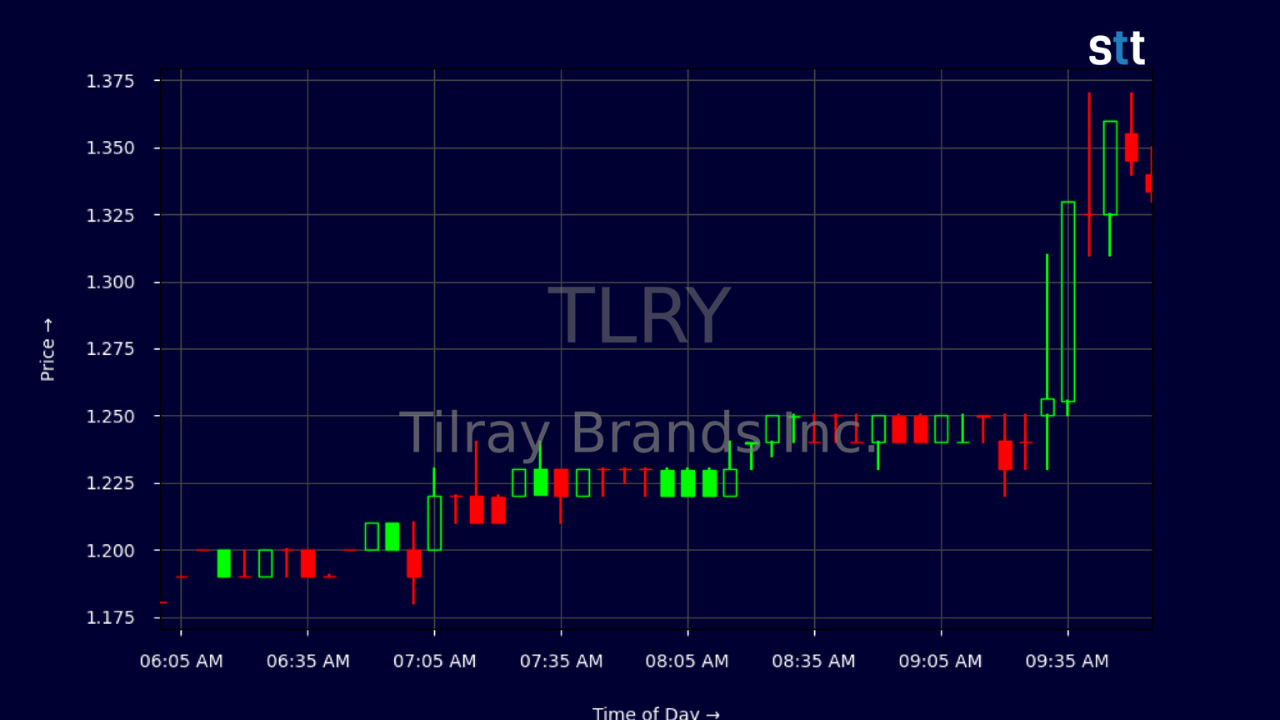Table of Contents

Tilray Brands remains one of cannabis’s most closely watched stocks. TLRY Stock, once hailed as the leader of the cannabis boom in its early days, has now evolved into a consumer goods company.This blog is coverd by financeinfo.Its transformation from a pure cannabis play into a multifaceted firm encompassing cannabis, alcohol, wellness, and distribution has sparked new interest among retail investors–especially amid renewed U.S. legalization efforts and speculative trading.
Company Overview: From Cannabis Pioneers to Diversified CPG Firm
Tilray Brands, founded in 2013, was the first cannabis company in 2018 to list on a major U.S. exchange. Tilray Brands merged in 2020 with Aphria – another Canadian cannabis leader – to create the largest cannabis company on the planet by revenue. The company’s growth was hampered by fierce competition, regulatory setbacks and slower than expected legalization in the U.S.
Recent Stock Movements & Catalysts
TLRY’s stock price has seen dramatic movements in recent weeks due to its inclusion within the meme-stock narrative. The TLRY Stock soared by over 17% on a single August 2025 day, following the retail-driven momentum of the cannabis sector and general hype. This pattern is similar to previous increases in 2021 and 2020, when Tilray experienced rapid gains driven by Reddit traders.
U.S. Cannabis Reclassification Speculation
The speculation that the U.S. government may reclassify cannabis as a Schedule 3 drug is one of the major catalysts behind TLRY’s recent growth. The former president Trump hinted at this potential move, which would ease banking and tax restrictions for cannabis firms and possibly open the floodgates to federal legalization. Investors saw this as an enormous opportunity and sent TLRY Stock like Tilray skyrocketing.
New Products Launched
Tilray continues to launch new products to appeal to consumers who are health-conscious or prefer an alternative lifestyle. Recently, it launched a line infused with mushrooms under the brand Mountain Shot as well as Whole-Wheat Protein Crackers via its Humble Seedz division. These initiatives are part of Tilray’s strategy to expand beyond cannabis, and establish a foothold into broader wellness markets.

Financial Overview: Revenue growth vs. profitability challenges
TLRY Stock top line has grown steadily despite the TLRY Stock market volatility. In fiscal year 2024 the company generated revenue of approximately 789 million, up nearly 26% from year to year. It reported a record revenue of 821 million in the fiscal year 2025, due to a strong performance by both cannabis and beverage segment.
Adjusted EBITDA Turning Positive
TLRY Stock core operations have become more efficient, despite the fact that net losses are persistent. The company’s adjusted EBITDA in Q4 2025 was around 28 million. It is expected to reach between 62 and 72 million by fiscal year 2026. These improvements are encouraging but still far from profitability.
Cash and Debt Position
Tilray’s balance sheet is a mixture of strength and concern. The company has 256-465 millions in cash or equivalents. This gives it flexibility to operate and make acquisitions. It also has $257-590 million of debt which is high compared to its equity. Tilray has a healthy 2.6x and a solid 1.6x quick ratio.
Margin of Operating and Impairments
Tilray’s finances are impacted by impairment charges.The company reported a massive $1.4b impairment due to asset writedowns. This led to a negative margin of more than 600%. These non-cash costs have a significant impact on net income, and they highlight the risk of paying too much for acquisitions or business units that are underperforming.
Acquisitions Drive Diversification
Tilray is aggressively acquiring assets to diversify its business beyond cannabis, and to reduce its exposure regulatory uncertainty. These acquisitions provide Tilray with a more diverse consumer portfolio, and revenue from markets which are more stable than cannabis. Integration of these companies, while managing debt and complexity in operations remains a challenge.
European Market Expansion
Tilray also expanded its presence throughout Europe, a continent where medical cannabis has become more widely accepted and is less divisive politically. Germany offers an excellent opportunity, particularly with the recent legislation that allows for a wider cannabis use. Tilray has pharmaceutical-grade production plants in Portugal and Germany, giving it a competitive edge on the European medical cannabis markets.
U.S. Market Strategy
Tilray has been positioning itself for when federal legalization in the U.S. occurs. Tilray’s growing portfolio of hemp-derived CBD and alcohol products maintains its commercial presence in the U.S. Tilray plans to convert infrastructure into THC operations when permitted. Irwin Simon, CEO of Tilray, has stated that the U.S. is the company’s single biggest growth opportunity.
Stock valuation and market sentiment
At a current price of around $1.39 and a market cap of less than $800 million, many analysts argue that Tilray is significantly undervalued–particularly when comparing its asset base and brand portfolio to similar CPG companies. Reddit’s analysis suggests that the value of Tilray’s physical assets and brand portfolio could be as high as 2-3 billion.
TheTLRY Stock is still struggling due to the ongoing losses, capital raisings that dilute it, and the general bearish sentiment towards cannabis stocks. The short interest is high, reflecting the skepticism of institutional investors.

Analyst Ratings
Most analysts rate TLRY a “Hold” with price targets ranging between 1,33 and $1.80 depending on the outlook of U.S. profitability and legalization. Although there is room for growth, analysts are not confident enough to recommend TLRY as a buy until key financial and regulatory milestones have been met.
FAQs
1. Why has the Tilray stock recently spiked?
TLRY Stock jumped after speculation that cannabis would be reclassified in the U.S. as Schedule III drugs, and general momentum among meme-stock investors.
2. Is Tilray a profitable company?
Tilray has not yet achieved profitability on a net profit basis. Tilray has achieved a positive adjusted EBITDA which indicates operational progress.
3. Does Tilray pay dividends?
No. TLRY currently does not pay a quarterly dividend, and it has no immediate plans to start.
4. What are Tilray’s biggest risks?
The main risks are regulatory uncertainty, sustained losses, impairment charges and competition on both legal and illicit markets.
5. What is the long-term plan for growth of your company?
Tilray has plans to expand their cannabis, alcohol and wellness product lines. They are also focusing on the U.S. THC Market once it becomes federally legal.
Conclusion:
Tilray Brands has a high risk, high reward stock. On one hand, it has a diversified product portfolio, a global footprint, and promising long-term growth opportunities–especially in the U.S. cannabis market. It is unprofitable and highly leveraged.
For investors who have a higher risk tolerance TLRY could be a good speculative wager on the continued growth of alternative wellness markets in the U.S. TLRY is not suitable for conservative investors who are looking for stability and consistent earnings.
